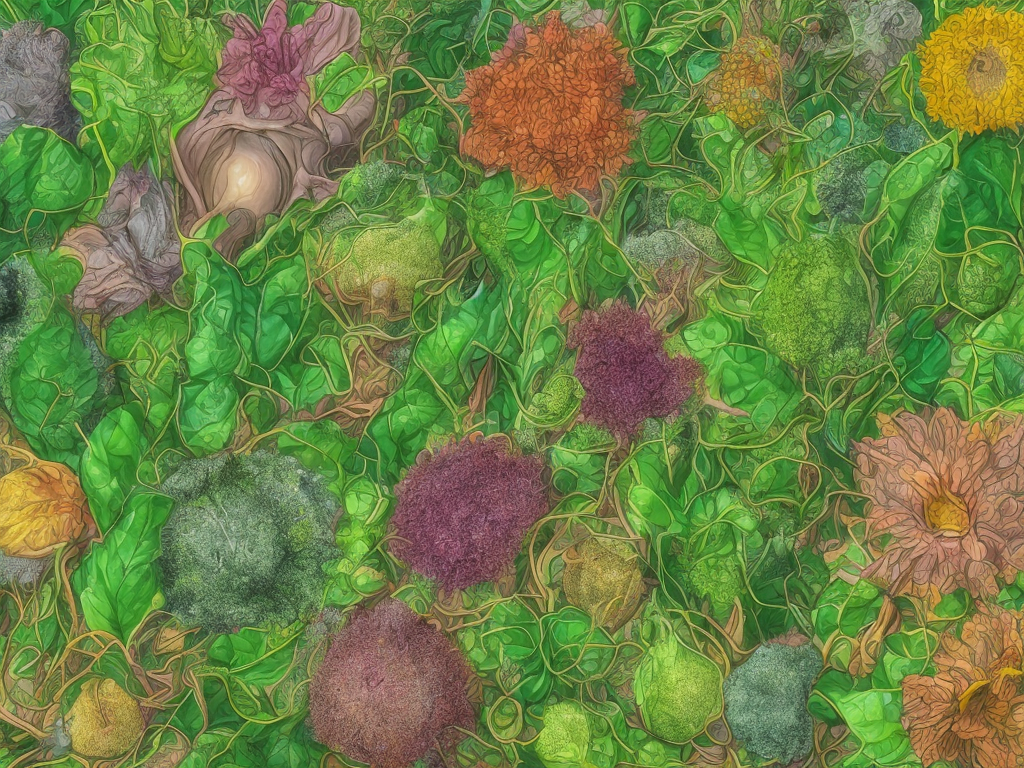
Plants are incredibly diverse organisms that have evolved to occupy nearly every habitat on Earth. From towering trees to delicate flowers, plants come in all shapes and sizes. One way to classify plants is based on their seed structure, specifically whether they are monocotyledons or dicotyledons.
The terms "monocotyledon" and "dicotyledon" refer to the number of cotyledons, or seed leaves, that a plant embryo possesses. The cotyledon serves as the first leaf or leaves to emerge from the seed and plays a vital role in early growth and development. While both monocots and dicots share similarities in their overall structure and function, there are key differences that set them apart.
One of the most noticeable differences between monocotyledons and dicotyledons can be seen in their leaves. Monocot leaves typically have parallel veins, meaning that the veins run parallel to each other from the base to the tip of the leaf. Examples of monocots with parallel-veined leaves include grasses, lilies, and bamboo. On the other hand, dicot leaves have a branching pattern of veins, known as netted or reticulated veins. This can be seen in leaves of trees like oak, maple, and cherry.
Another distinguishing feature between monocots and dicots is the arrangement of their vascular bundles. Vascular bundles are specialized tissues responsible for the transport of water, nutrients, and sugars throughout the plant. In monocots, these bundles are scattered throughout the stem, often in a complex arrangement. This is in contrast to dicots, where the vascular bundles are arranged in a ring or cylinder, making them more easily visible.
Monocots and dicots also differ in the number and arrangement of floral parts. Flowers serve as the reproductive structures of plants, attracting pollinators and facilitating the production of seeds. Monocot flowers typically have floral parts in multiples of three, including three petals, three sepals, and multiples of three stamens. Lily flowers are a classic example of monocot flowers with their six petals and six stamens.
In contrast, dicots usually have floral parts in multiples of four or five. For instance, a typical dicot flower may have four or five petals, four or five sepals, and numerous stamens or carpels. Roses are a well-known example of dicot flowers with five petals and numerous stamens.
The root systems of monocots and dicots also display contrasting characteristics. Monocots generally possess fibrous root systems. These roots are relatively thin and branched, originating from the base of the stem. Examples of monocots with fibrous roots include grasses and orchids. Dicots, on the other hand, typically have taproots or a primary root from which smaller lateral roots branches off. Carrots and dandelions are familiar examples of dicots with taproots.
Another distinction between monocots and dicots lies in their seed structure. Monocotyledon seeds are generally smaller and have a single cotyledon. Corn, wheat, and rice are examples of monocotyledon seeds. Dicotyledon seeds, on the other hand, tend to be larger and have two cotyledons. Peanuts, beans, and almonds are examples of dicotyledon seeds.
The growth pattern of monocots and dicots also showcases differences. Monocots typically grow from the inside out. This means that new growth occurs near the center of the plant and gradually expands outward. This growth pattern is observed in the way that new leaves emerge from the center of grass clumps. Dicots, on the other hand, usually grow from the outside in. The stem expands at its outermost layer, allowing for the addition of new cells and tissues. This growth pattern can be seen in the bark of a tree, which accumulates over time as the tree expands outward.
While monocots and dicots have distinct characteristics, it is important to note that these are generalizations. There are exceptions to the rule, with some plant species displaying characteristics of both groups. Botanists continually examine and revise classifications as new information becomes available.
Understanding the differences between monocotyledons and dicotyledons can be valuable in multiple aspects. For gardeners and horticulturists, this knowledge can aid in the selection and care of plants. For example, understanding that monocots tend to have fibrous root systems can help guide decisions on suitable planting locations and watering practices. For plant scientists and researchers, recognizing these distinctions provides insights into the evolutionary history and relationships between various plant species.
In conclusion, monocotyledons and dicotyledons are two broad categories that help classify plants based on their seed structure and development. These terms refer to the number of cotyledons present in the plant embryo, and their differences are evident in several aspects including leaf structure, vascular bundle arrangement, floral parts, root systems, seed structure, and growth patterns. While these classifications provide useful guidelines, it is important to remember that nature is diverse and exceptions to these classifications do exist.
 Self-Instruct
Self-Instruct